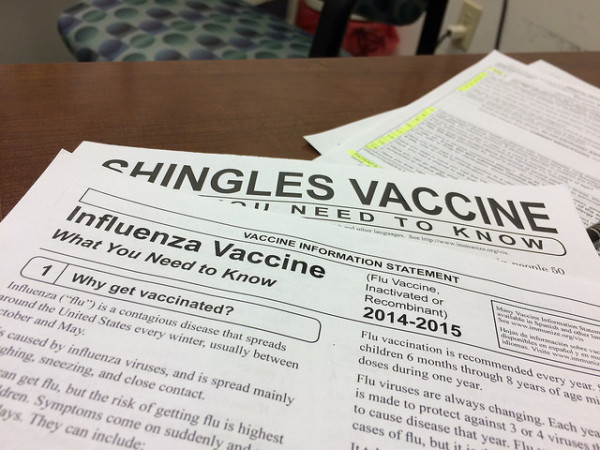The flu season is now in full swing, but it’s never too late to talk about the flu.
The viruses selected for the annual flu shot vary from year to year depending on what researchers think are the strains most likely to cause disease. Influenza A is able to infect both animals and humans and is the type that causes epidemics, and Influenza B is a generally milder type that only infects humans. There are two options for your flu vaccine depending on how many virus types are included in the shot. The trivalent vaccine includes protection against two influenza A viruses, H1N1 and H3N2, and one human influenza B virus, while the quadrivalent flu shot protects against two types of influenza A and two types of influenza B. The trivalent shot was the traditional vaccine for years, but the quadrivalent shot broadens the protection by including two influenza B types.
Since the flu vaccine has to be made well ahead of time for there to be enough for mass administration, these strains have to be chosen several months before flu season: the WHO holds a meeting on choosing the strains in February for the Northern Hemisphere and September for the Southern Hemisphere. Unfortunately, the recommended strains sometimes don’t provide a lot of protection. The CDC reported that the 2014-2015 flu vaccine was only 18% effective against the H3N2 virus because the virus had mutated in certain key areas, a process known as antigenic drift.
Image Source: Peter Dazeley
This occurs because influenza is made of RNA, which is unstable and doesn’t have the machinery for proofreading and repair during replication that DNA has. What this means is that it mutates quicker and more frequently. Sometimes the mutations don’t actually change the virus very much, and the vaccine will still be effective. Vaccines work by exposing your body to parts of the virus to create antibodies, proteins produced against pathogens to bind to and neutralize them. These mutations, however, were found in the specific areas recognized by the antibodies and changed the virus enough that the antibodies produced from the vaccine could not bind. This allowed the mutated virus to avoid immune recognition and appears to have contributed to the ineffectiveness of the vaccine.
The WHO has recommended that this year’s flu vaccine be updated with the information that the H3N2 viruses are much different from previous years, hopefully to look into a vaccine with components that will elicit protection against these new viruses. Even if you’re never 100% guaranteed protection against the flu, this isn’t to say that you should forego the vaccine entirely. After all, any protection is better than no protection.
See the recommended influenza vaccine for the northern hemisphere for 2015-2016 here.
Feature Image Source: Bill Smith










